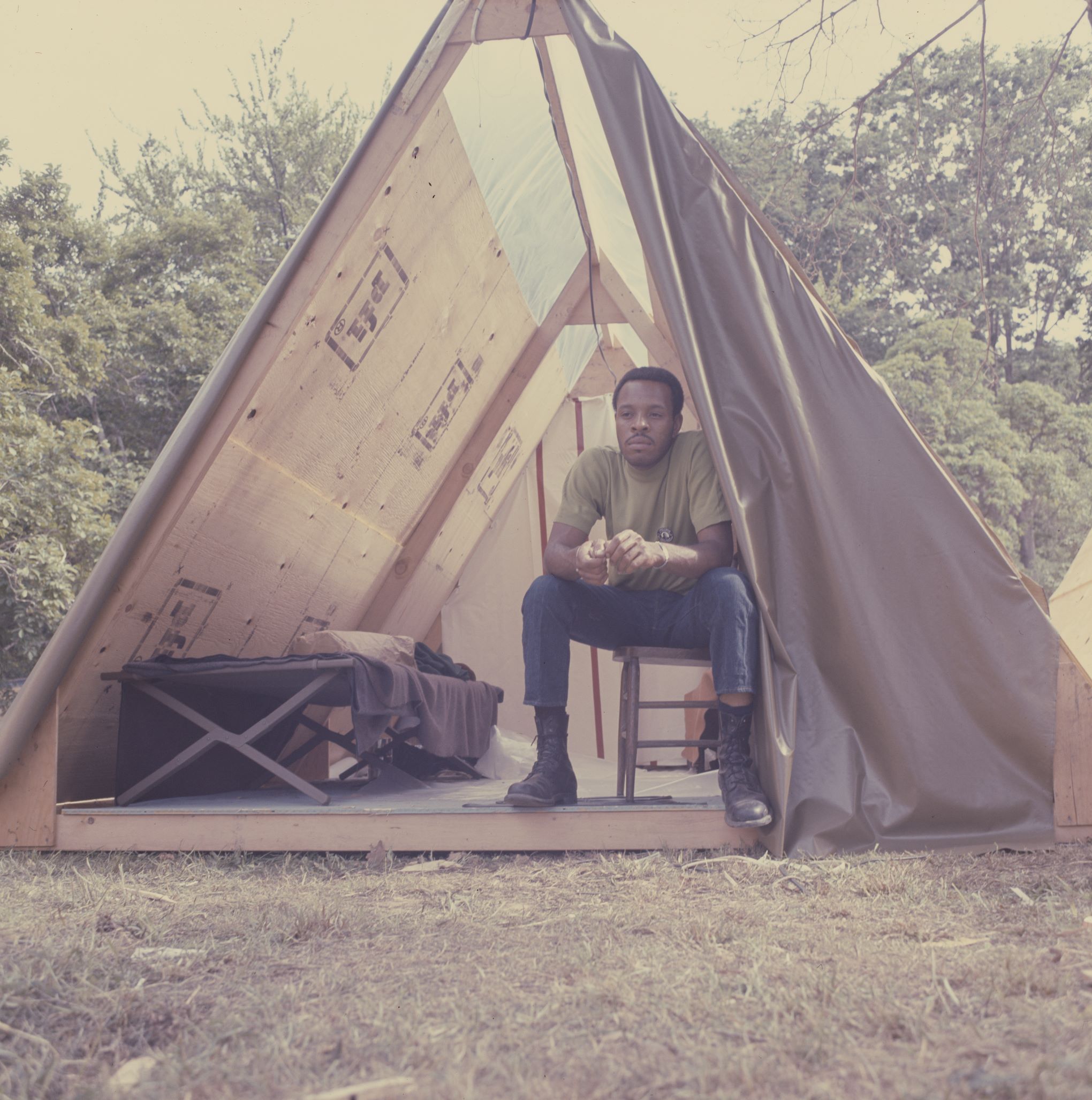Smithsonian Traveling Exhibition Explores 1968 Poor People’s Campaign
A new traveling exhibition from the Smithsonian illuminates the often-overlooked history of the multicultural movement that confronted poverty and redefined social justice and activism in America. “Solidarity Now! 1968 Poor People’s Campaign” will begin a national tour at the National Civil Rights Museum at the Lorraine Hotel in Memphis, Tennessee, a Smithsonian Affiliate, May 14. The final crusade of Martin Luther King Jr.’s life, the Poor People’s Campaign was launched in his honor at a memorial service led by Coretta Scott King and Ralph Abernathy at the Lorraine Motel May 2, 1968.
“Solidarity Now!” features photographs, oral histories with campaign participants and organizers, and an array of protest signs, political buttons and audio field recordings collected during the campaign. The exhibition explores the significance of the tactics and impact of this campaign that drew thousands of people to build a protest community on the National Mall in Washington, D.C. For nearly six weeks, they inhabited “a city of hope” on 15 acres between the Washington Monument and the Lincoln Memorial to call the nation’s attention to the crippling effects of poverty for millions of Americans. The protest site was called Resurrection City.
Through a 3D map of Resurrection City, visitors can examine the planned spaces for housing, a cultural center, city hall, theater stage and essential services, including facilities for food and dining, sanitation, communications, education, medical and dental care, and childcare.
Organized by the Smithsonian Institution Traveling Exhibition Service (SITES) and the Smithsonian’s National Museum of African American History and Culture, “Solidarity Now!” will be on view in Memphis through July 24 before continuing a 10-city national tour. Future stops include The Sixth Floor Museum at Dealey Plaza in Dallas; the National Underground Railroad Freedom Center, a Smithsonian Affiliate in Cincinnati; the Mississippi Civil Rights Museum, a Smithsonian Affiliate in Jackson; the New Mexico History Museum in Santa Fe; Washington State History Museum in Tacoma; and the Abraham Lincoln Presidential Library and Museum in Springfield, Illinois. Visit sites.si.edu for tour details.
The exhibition is supported by the CVS Health Foundation, a private foundation created by CVS Health to help people live healthier lives.
In the 1960s, as the United States emerged as a global model of wealth and democracy, an estimated 25 million Americans lived in poverty. From the elderly and underemployed to children and persons with disabilities, poverty affected people of every race, age and religion. In response, the Southern Christian Leadership Conference, led by King and Abernathy, organized the Poor People’s Campaign as a national human rights crusade.
As a multiethnic movement that included African Americans, Mexican Americans, Native Americans, Puerto Ricans, Asians and poor whites from Appalachia and rural communities, the six-week protest community in Washington attracted demonstrators nationwide. The campaign leaders presented demands to Congress, including demands for jobs, living wages and access to land, capital and health care. It was the first large-scale, nationally organized demonstration after King’s death.
“Solidarity Now! 1968 Poor People’s Campaign” is based on “City of Hope: Resurrection City & the 1968 Poor People’s Campaign,” which was organized by the National Museum of African American History and Culture and on view at the National Museum of American History from Dec. 15, 2017, to Feb. 3, 2019.
The exhibition title is a reference to the Solidarity Day Rally held June 19, 1968, as a major highlight and capstone for the movement. The rally at the Lincoln Memorial featured speeches by celebrities, activists and campaign organizers as a continuation of the 1963 March on Washington for Jobs and Freedom.
About SITES and Smithsonian Affiliations
SITES and Smithsonian Affiliations are critical national outreach units at the Smithsonian Institution. For more than 70 years, SITES has been connecting Americans to their shared cultural heritage through a wide range of exhibitions about art, science and history. Smithsonian Affiliations establishes and maintains the Smithsonian’s long-term partnerships with museums, educational organizations and cultural institutions in the U.S., Puerto Rico and Panama. Together, SITES and Affiliations share the Smithsonian's vast resources with millions of people outside Washington, D.C. Visit sites.si.edu and affiliations.si.edu for more information.
About the National Museum of African American History and Culture
Since opening Sept. 24, 2016, the National Museum of African American History and Culture in Washington, D.C., has welcomed more than 7 million visitors. The nearly 400,000-square-foot museum is the nation’s largest and most comprehensive cultural destination devoted exclusively to exploring, documenting and showcasing the African American story and its impact on American and world history. For more information about the museum, visit nmaahc.si.edu and follow @NMAAHC on Twitter, Facebook and Instagram.
# # #
SI-91-2022

